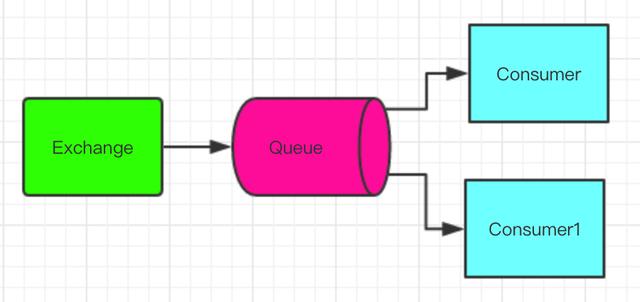消费端限流
1. 为什么要对消费端限流
假设一个场景,首先,我们 Rabbitmq 服务器积压了有上万条未处理的消息,我们随便打开一个消费者客户端,会出现这样情况: 巨量的消息瞬间全部推送过来,但是我们单个客户端无法同时处理这么多数据!
当数据量特别大的时候,我们对生产端限流肯定是不科学的,因为有时候并发量就是特别大,有时候并发量又特别少,我们无法约束生产端,这是用户的行为。所以我们应该对消费端限流,用于保持消费端的稳定,当消息数量激增的时候很有可能造成资源耗尽,以及影响服务的性能,导致系统的卡顿甚至直接崩溃。
2.限流的 api 讲解
RabbitMQ 提供了一种 qos (服务质量保证)功能,即在非自动确认消息的前提下,如果一定数目的消息(通过基于 consume 或者 channel 设置 Qos 的值)未被确认前,不进行消费新的消息。
/*** Request specific "quality of service" settings.* These settings impose limits on the amount of data the server* will deliver to consumers before requiring acknowledgements.* Thus they provide a means of consumer-initiated flow control.* @param prefetchSize maximum amount of content (measured in* octets) that the server will deliver, 0 if unlimited* @param prefetchCount maximum number of messages that the server* will deliver, 0 if unlimited* @param global true if the settings should be applied to the* entire channel rather than each consumer* @throws java.io.IOException if an error is encountered*/void basicQos(int prefetchSize, int prefetchCount, boolean global) throws IOException;- prefetchSize:0,单条消息大小限制,0代表不限制
- prefetchCount:一次性消费的消息数量。会告诉 RabbitMQ 不要同时给一个消费者推送多于 N 个消息,即一旦有 N 个消息还没有 ack,则该 consumer 将 block 掉,直到有消息 ack。
- global:true、false 是否将上面设置应用于 channel,简单点说,就是上面限制是 channel 级别的还是 consumer 级别。当我们设置为 false 的时候生效,设置为 true 的时候没有了限流功能,因为 channel 级别尚未实现。
- 注意:prefetchSize 和 global 这两项,rabbitmq 没有实现,暂且不研究。特别注意一点,prefetchCount 在 no_ask=false 的情况下才生效,即在自动应答的情况下这两个值是不生效的。
3.如何对消费端进行限流
- 首先第一步,我们既然要使用消费端限流,我们需要关闭自动 ack,将 autoAck 设置为 falsechannel.basicConsume(queueName, false, consumer);
- 第二步我们来设置具体的限流大小以及数量。channel.basicQos(0, 15, false);
- 第三步在消费者的 handleDelivery 消费方法中手动 ack,并且设置批量处理 ack 回应为 truechannel.basicAck(envelope.getDeliveryTag(), true);
这是生产端代码,与前几章的生产端代码没有做任何改变,主要的操作集中在消费端。
import com.rabbitmq.client.Channel;import com.rabbitmq.client.Connection;import com.rabbitmq.client.ConnectionFactory;public class QosProducer { public static void main(String[] args) throws Exception { //1. 创建一个 ConnectionFactory 并进行设置 ConnectionFactory factory = new ConnectionFactory(); factory.setHost("localhost"); factory.setVirtualHost("/"); factory.setUsername("guest"); factory.setPassword("guest"); //2. 通过连接工厂来创建连接 Connection connection = factory.newConnection(); //3. 通过 Connection 来创建 Channel Channel channel = connection.createChannel(); //4. 声明 String exchangeName = "test_qos_exchange"; String routingKey = "item.add"; //5. 发送 String msg = "this is qos msg"; for (int i = 0; i < 10; i++) { String tem = msg + " : " + i; channel.basicPublish(exchangeName, routingKey, null, tem.getBytes()); System.out.println("Send message : " + tem); } //6. 关闭连接 channel.close(); connection.close(); }}这里我们创建了两个消费者,以方便验证限流api中的 global 参数设置为 true 时不起作用.。整体结构如下图所示,两个 Consumer 都绑定在同一个队列上,这样的话两个消费者将共同消费发送的10条消息。

import com.rabbitmq.client.*;import java.io.IOException;public class QosConsumer { public static void main(String[] args) throws Exception { //1. 创建一个 ConnectionFactory 并进行设置 ConnectionFactory factory = new ConnectionFactory(); factory.setHost("localhost"); factory.setVirtualHost("/"); factory.setUsername("guest"); factory.setPassword("guest"); factory.setAutomaticRecoveryEnabled(true); factory.setNetworkRecoveryInterval(3000); //2. 通过连接工厂来创建连接 Connection connection = factory.newConnection(); //3. 通过 Connection 来创建 Channel final Channel channel = connection.createChannel(); //4. 声明 String exchangeName = "test_qos_exchange"; String queueName = "test_qos_queue"; String queueName1 = "test_qos_queue_1"; String routingKey = "item.#"; channel.exchangeDeclare(exchangeName, "topic


















